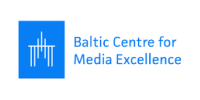DIGIRES presents an innovative handbook of inclusive media literacy exercises for teachers
DIGIRES, the Baltic Research Foundation for Digital Resilience, presents an innovative handbook for teachers “How to creatively integrate media and information literacy exercises in the classroom?” developed by a team of media literacy and media experts, extended and tested by the BECID (Baltic Engagement Centre for Combating Information Disorders) project. It provides effective methods and tools to help students better understand the modern media world, identify misinformation and develop critical thinking.
“A teacher is a deliverer of information and an evoker of the human imagination, with deep professional experience and a substantial body of subject knowledge. However, they often lack the skills to communicate this knowledge from the perspective of the media world. There is a serious lack of systematic exercises that would help in working with students and that do not require very deep prior training. The DIGIRES exercises are therefore designed to bring media literacy education closer to real-life experiences, to engage and empower students to think and question information in the public domain. The methods are presented with examples and detailed scenarios, which can be easily applied in different subjects”, says prof. Auksė Balčytienė, the head of DIGIRES and one of the authors of the handbook for teachers.
The practical approaches include a detailed step-by-step plan, tips and guidelines, discussion questions, and a comprehensive tool to help teachers prepare for media literacy lessons in a timely and high-quality way. Each method is complemented by slides, useful references and sources in English and Lithuanian.
The interactive activity “Media Walkshop” encourages to notice and recognise the media world around you, to understand the meaning of information and media objects in your everyday environment. The “Lateral Reading” method teaches to recognise the aspects of a reliable source and to evaluate textual and visual information in terms of reliability. The interactive activity “Categorising Opinions” helps to understand how dichotomous thinking and the categorisation of things as “black” or “white” divide society and push it towards confrontation, polarisation and hate speech. The method “Understanding Uncertainty” enables you to know your emotions, behavior and ways of searching for information under conditions of uncertainty, developing your resistance to manipulation and information disturbances.
The handbook for teachers was prepared by: Auksė Balčytienė, Head of the DIGIRES Association and Chief Researcher, professor at the Department of Public Communication and the Head of the UNESCO Chair on Media and Information Literacy for an Inclusive and Knowledge Society at Vytautas Magnus University; Aistė Meidutė, journalist, fact-checker, editor of the project “Lie Detector” of the news portal DELFI; Darius Remeika, junior researcher and a PhD student in Communication and Information sciences at Vytautas Magnus University, expert in information and psychological operations and disinformation; Rimgailė Kasparaitė, junior researcher and a PhD student in Communication and Information sciences at Vytautas Magnus University; Kristina Berksun, Junior Researcher and Communication Specialist at Vytautas Magnus University. The style and layout of the Handbook for Teachers designer is Austėja Vaičiulevičiūtė.
The Handbook for Teachers can be found here.
The slides and other useful material created by DIGIRES to go with the guide can be found here.
Text author Austėja Vaičiulevičiūtė







